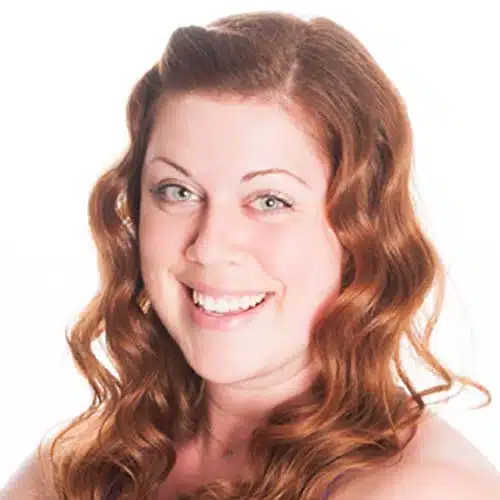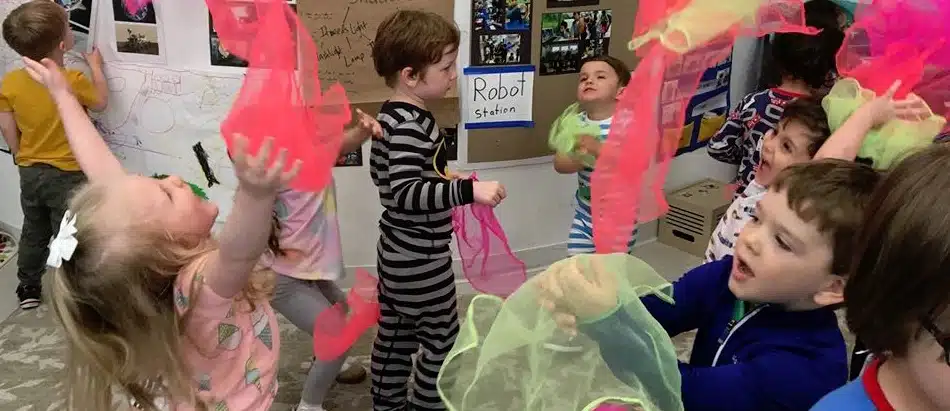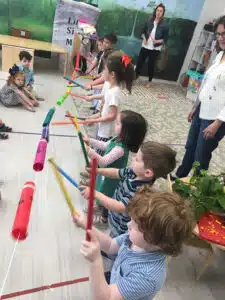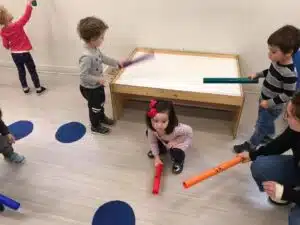The Universal Language: Music’s Role in Human Development
I have never met a person who didn’t like at least one kind of music. Music and rhythm are inherent to being human – whether that means being a natural musician or simply listening to and appreciating it.
In the womb, a mother’s voice sounds melodic when she speaks and after birth feels familiar and comforting. It is also the beginning of language development for a child. A newborn can recognize their mother’s voice and native tongue immediately upon entering the world! How amazing is that?
When a parent rocks a baby, there is a natural rhythm that happens. That steady side to side, back-and-forth motion has a reliable calming effect that sticks with us through adulthood. Thinking about floating on gentle waves in the ocean or rocking in a hammock makes me ready for a nap right now!
Rhythm and Response: A Baby’s First Musical Expressions
Clapping hands is one of the earliest ways a baby can communicate with the people around them and soon turns into clapping along to music. Even before being able to walk, a baby will bounce along to a song that’s playing.
Music in Preschool: Building Math and Literacy Foundations Through Rhythm
By the time our kiddos are preschool age, music education has been a part of their lives for a long time through listening with their grownups, watching children’s shows, and singing nursery rhymes. At this age, music sets the stage for learning math and literacy skills that will be the foundation of learning later on in life.
When keeping a steady beat with a song, a child is inadvertently practicing one-to-one correspondence. One clap for each beat. This also helps with sequencing. Whether or not it is explicitly understood, we know that songs have phrases and groupings. When we hear a verse to a song, we can predict how long the verse will be because verses are usually written in phrases of 4 or 8. When that 4th or 8th phrase ends, it’s time for the refrain which is also generally in phrases of 4 or 8. Throw in a bridge to a song and, you guessed it, it’s usually comprised of 4 or 8 phrases. These musical activities in preschool help children develop early math and pattern recognition skills.
Rhythm: The Mathematical Structure of “Old MacDonald”
Old MacDonald had a farm
1 2 3 4
E I E I O
1 2 3 4
And on that farm he had a pig
1 2 3 4
E I E I O
1 2 3 4
Here, each line is a phrase or 4 beats. These four phrases together make our verse. We know the refrain is next and is also made up of four phrases. Then, we go back to the refrain – four phrases again. Music has a formula!
Music’s Impact on Brain Development and Beyond
Another thing that happens when a child listens to music is the whole body gets involved. So, while they are (without realizing it) soaking up the natural sequencing of music, they are also helping both sides of the brain communicate by moving every part of their body! The more they move, the more the sides of the brain communicate, and the more prepared they will be for advanced learning as they grow – so go ahead and have that dance party! This is why singing an instruction for your child can make it more exciting and memorable. The melody gets their attention, and the natural sequencing makes it easy to remember. Listening to different songs can also be a door to expanding vocabulary and building basic skills!
I hope you feel inspired to share some of your favorite music with your little one! I feel a dance party coming on…

Anna Rhoads
From her first time on stage at age 4, Anna knew that music and dance would be a lifelong devotion! While growing up in Jefferson City, Missouri, she spent all of her free time at the dance studio, acting in musicals, and singing in choirs or at vocal competitions. She then followed her dreams all the way to the State University of New York at Buffalo to study Musical Theater. Anna followed her heart home to the Midwest to pursue her love of music further as a freelance vocalist.
Anna starting working with young children when she was in high school, teaching beginning dance classes at her studio. She came to Bubbles in 2014 as a Music Teacher and an assistant for Preparing for Preschool classes. A year later, she was given the opportunity to assist in the preschool program and has wanted to make that her focus ever since. She received her Early Childhood Lead Teacher qualification from Truman College in 2018 and is now living the dream as a Lead Preschool Teacher at Bubbles!


